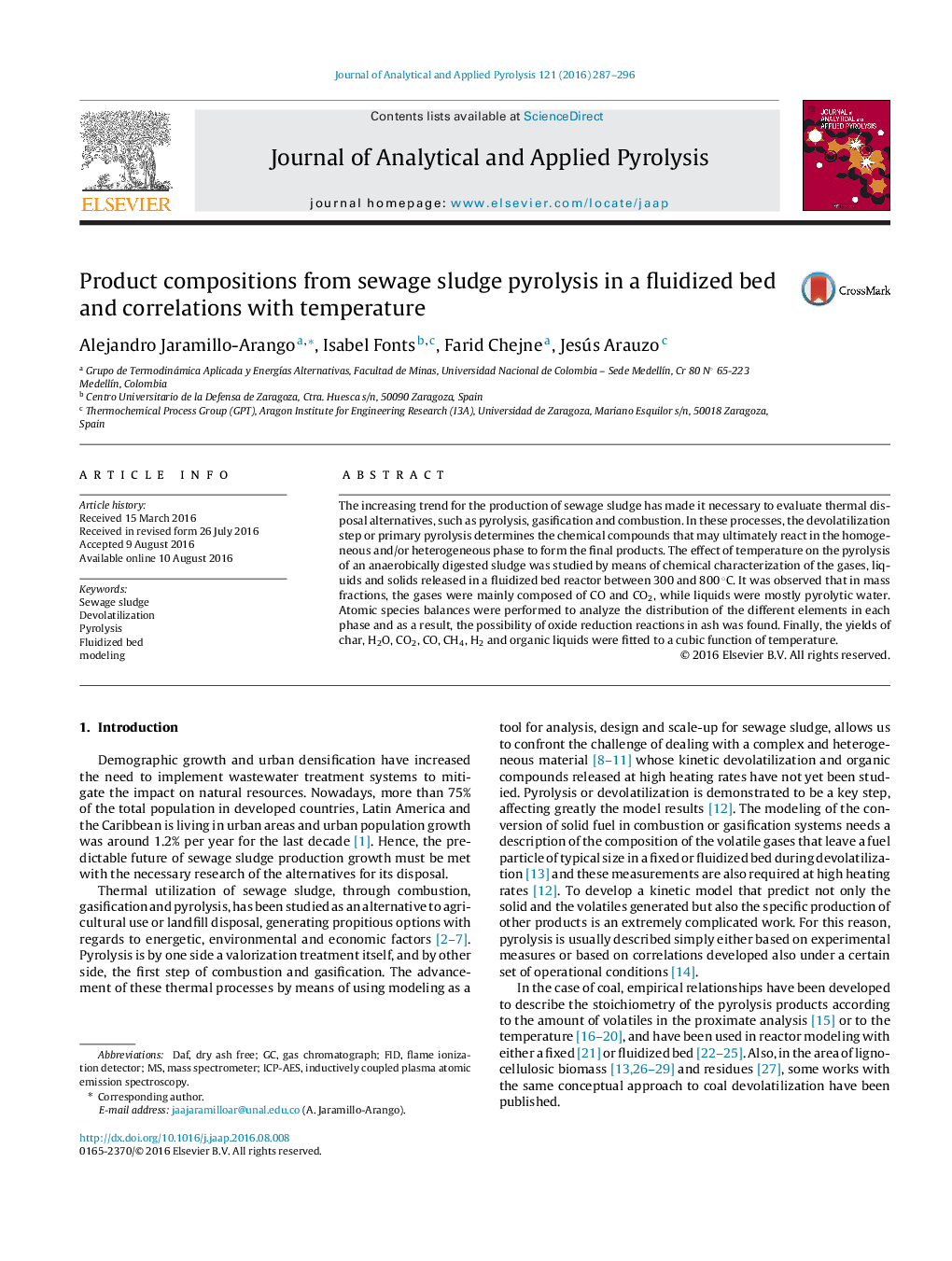| کد مقاله | کد نشریه | سال انتشار | مقاله انگلیسی | نسخه تمام متن |
|---|---|---|---|---|
| 5134730 | 1492956 | 2016 | 10 صفحه PDF | دانلود رایگان |
- Pyrolysis of sewage sludge was performed over a temperature range 300-800 °C.
- Solid, liquid and gas fractions were characterized.
- Atomic species balances were calculated.
- An empirical model for predicting yields of char, organic liquid, H2O, CO2, CO, CH4 and H2 was proposed as a polynomial cubic function of bed temperature.
The increasing trend for the production of sewage sludge has made it necessary to evaluate thermal disposal alternatives, such as pyrolysis, gasification and combustion. In these processes, the devolatilization step or primary pyrolysis determines the chemical compounds that may ultimately react in the homogeneous and/or heterogeneous phase to form the final products. The effect of temperature on the pyrolysis of an anaerobically digested sludge was studied by means of chemical characterization of the gases, liquids and solids released in a fluidized bed reactor between 300 and 800 °C. It was observed that in mass fractions, the gases were mainly composed of CO and CO2, while liquids were mostly pyrolytic water. Atomic species balances were performed to analyze the distribution of the different elements in each phase and as a result, the possibility of oxide reduction reactions in ash was found. Finally, the yields of char, H2O, CO2, CO, CH4, H2 and organic liquids were fitted to a cubic function of temperature.
200
Journal: Journal of Analytical and Applied Pyrolysis - Volume 121, September 2016, Pages 287-296
